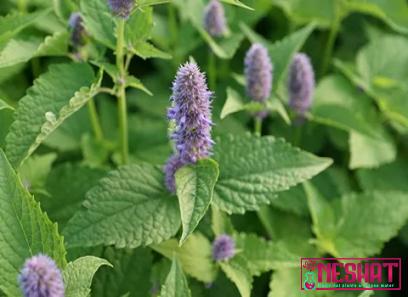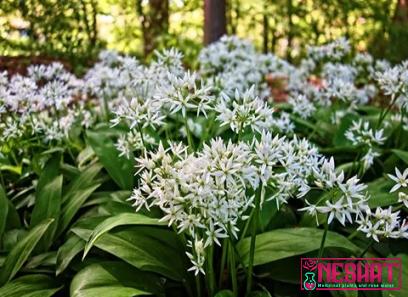Lavender, known for its soothing aroma and vibrant purple blooms, has captured the hearts of many. This versatile herb has been valued for centuries for its medicinal properties, culinary uses, and its presence in the beauty and fragrance industries. It comes as no surprise that lavender has gained immense popularity in recent years, becoming a blooming business opportunity for entrepreneurs and agricultural enthusiasts alike. In this article, we will explore the potential of the lavender flower industry and provide tips for starting a successful lavender business. 1. Identifying Market Demand: Before diving into the lavender industry, it is crucial to understand the market demand for lavender products. With its wide range of applications, lavender has attracted consumers across various sectors.

.
 Determine which specific lavender products are in high demand, such as essential oils, soaps, candles, or dried floral arrangements. Stay updated on consumer trends and preferences to cater to the ever-evolving market. 2. Cultivation and Harvesting: Lavender thrives in well-drained soil and requires abundant sunlight. Conduct thorough research on different lavender varieties and their specific growing conditions. Choose a suitable location for cultivation and ensure the availability of essential resources, such as water, fertilizers, and pest control methods. Employ proper pruning and harvesting techniques to maximize yield without compromising plant health. 3. Essential Oil Extraction: One of the most valuable products derived from lavender is its essential oil. Investing in high-quality machinery or partnering with a local distillery can streamline the essential oil extraction process. Ensure your production methods comply with international standards and emphasize the quality and purity of your lavender oil, offering your customers a premium experience.
Determine which specific lavender products are in high demand, such as essential oils, soaps, candles, or dried floral arrangements. Stay updated on consumer trends and preferences to cater to the ever-evolving market. 2. Cultivation and Harvesting: Lavender thrives in well-drained soil and requires abundant sunlight. Conduct thorough research on different lavender varieties and their specific growing conditions. Choose a suitable location for cultivation and ensure the availability of essential resources, such as water, fertilizers, and pest control methods. Employ proper pruning and harvesting techniques to maximize yield without compromising plant health. 3. Essential Oil Extraction: One of the most valuable products derived from lavender is its essential oil. Investing in high-quality machinery or partnering with a local distillery can streamline the essential oil extraction process. Ensure your production methods comply with international standards and emphasize the quality and purity of your lavender oil, offering your customers a premium experience.
..
 4. Diversification: While essential oils are a lucrative aspect of the lavender business, consider diversifying your product range to attract a wider customer base. Develop lavender-based cosmetics, bath products, or culinary items to tap into different market segments. Packaging and branding play a vital role in product differentiation, so invest in eye-catching designs and eco-friendly materials to stand out from competitors. 5. Marketing and Distribution: Develop a strong online presence to reach potential customers beyond your local market. Create an engaging website showcasing your products, their benefits, and customer testimonials. Leverage social media platforms to connect with lavender enthusiasts and collaborate with influencers to expand your reach. Establish partnerships with local retailers, spas, and hotels to extend your distribution network.
4. Diversification: While essential oils are a lucrative aspect of the lavender business, consider diversifying your product range to attract a wider customer base. Develop lavender-based cosmetics, bath products, or culinary items to tap into different market segments. Packaging and branding play a vital role in product differentiation, so invest in eye-catching designs and eco-friendly materials to stand out from competitors. 5. Marketing and Distribution: Develop a strong online presence to reach potential customers beyond your local market. Create an engaging website showcasing your products, their benefits, and customer testimonials. Leverage social media platforms to connect with lavender enthusiasts and collaborate with influencers to expand your reach. Establish partnerships with local retailers, spas, and hotels to extend your distribution network.
…
 6. Education and Events: Educate your target market about the benefits and versatility of lavender through workshops, seminars, or farm tours. Offer hands-on experiences such as U-pick lavender events, where visitors can harvest their own lavender bunches. Create lasting memories and associations between customers and your lavender brand. 7. Sustainability: Incorporate sustainable farming practices to minimize your ecological footprint and appeal to eco-conscious consumers. Implement water-efficient irrigation systems, explore organic farming techniques, and prioritize eco-friendly packaging options. Communicate your commitment to sustainability and environmental responsibility to differentiate your brand in a crowded market. Conclusion: The lavender flower industry presents an array of opportunities for those willing to explore its fragrant potential. By identifying market demand, mastering cultivation techniques, diversifying product offerings, and employing effective marketing strategies, entrepreneurs can carve a niche in this blooming business. With the right approach and passion for lavender, success awaits those who embark on this fruitful venture.
6. Education and Events: Educate your target market about the benefits and versatility of lavender through workshops, seminars, or farm tours. Offer hands-on experiences such as U-pick lavender events, where visitors can harvest their own lavender bunches. Create lasting memories and associations between customers and your lavender brand. 7. Sustainability: Incorporate sustainable farming practices to minimize your ecological footprint and appeal to eco-conscious consumers. Implement water-efficient irrigation systems, explore organic farming techniques, and prioritize eco-friendly packaging options. Communicate your commitment to sustainability and environmental responsibility to differentiate your brand in a crowded market. Conclusion: The lavender flower industry presents an array of opportunities for those willing to explore its fragrant potential. By identifying market demand, mastering cultivation techniques, diversifying product offerings, and employing effective marketing strategies, entrepreneurs can carve a niche in this blooming business. With the right approach and passion for lavender, success awaits those who embark on this fruitful venture.










Your comment submitted.